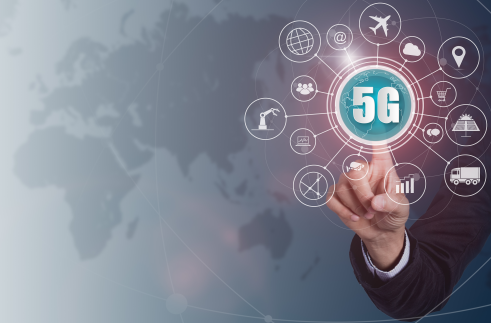5G deployment brings the Internet of Things into a convenient life

5G deployment brings the Internet of Things into a convenient life

IoT devices are undergoing a major change, and they are already filling homes, offices and industrial places. How will 5G deployment be the force that enables these devices to communicate and work together seamlessly, and will pave the way for truly smart homes and smart cities?
More and more smart devices occupy a place in the home and office, but the communication between them is still not seamless. Many of these devices use different wireless protocols, have different bandwidth and power requirements, and do not work effectively together. However, with the arrival of 5G, this may soon change.
5G rollout
Major telecom operators in many countries are switching off 3G cellular networks and switching on 5G networks. It's not an overnight shift, but it's moving forward. By the end of this year, 5G networks provided by one or more major operators will cover more than half of the country.
These networks will play a key role in expanding the IoT ecosystem due to their ability to store large amounts of data. With lower latency, higher bandwidth and a network capacity of 10 megabits per second per square kilometer, 5G is ideal for powering a growing number of smart devices.
With the ubiquity of smart cameras, cars, connected refrigerators, and more, IoT devices require faster, higher-capacity networks to meet their various connectivity needs. Third-generation networks aren't up to the task just yet, but 5G networks are. With 1,000 times the coverage of fourth-generation mobile phone networks, 5G also offers lower latency for faster, smoother and more reliable connections.
Almost every kind of device is getting smarter. But they won't be able to reach their full potential without a high-capacity, lightning-fast network to run them on, and the network these devices need is now becoming a reality.
Devices are getting smarter
For years, manufacturers have been embedding chips in appliances, cars, security cameras and a host of other devices. Today, many manufacturers are making faster 5G-connected devices.
According to data, the global 5G IoT market is valued at approximately US$1.4 billion in 2020, and is expected to grow at a compound annual growth rate of 72.1%, reaching a total market size of US$111.2 billion by 2028.
Smart, connected devices depend on the high-speed processing enabled by cloud computing, which is what cloud computing makes possible. But where this process happens is changing. The rollout of 5G will enable more edge computing, where data processing takes place at the source in a distributed system rather than being located on the actual device. This will be a game changer for IoT as it will open up whole new possibilities.
network and devices
Homes, workplaces and even cities will become smarter when faster, more reliable cellular networks are combined with future-proof optimized devices. These machines will communicate not only with the cloud, but with each other.
For example, autonomous driving. Today, some cars can drive themselves, but every bit of computing power that makes it possible is located in the actual vehicle, which means there are certain limits. But what if street lights and other objects on the road could provide some of the computing power needed? Edge computing could change the design of cars while making autonomous driving safer.
Countless other examples will become a reality in healthcare settings, office buildings, city blocks, industrial sites and other locations. Thanks to massive bandwidth, there is almost no limit to what we can possibly accomplish when machines can communicate with each other.
Summarize
Of course, the deployment of 5G means facing some new challenges. Anyone moving towards distributed data processing and smart devices should be concerned about security. Businesses that design digital infrastructure for today's data processing will have to completely rethink how information is collected, secured and shared.
However, the rollout of 5G is cause for celebration, and not just because it will deliver better WiFi on flights, faster movie downloads or better cell phone coverage in remote areas. When new networks and devices emerge together, it paves the way for a fascinating and exciting future.